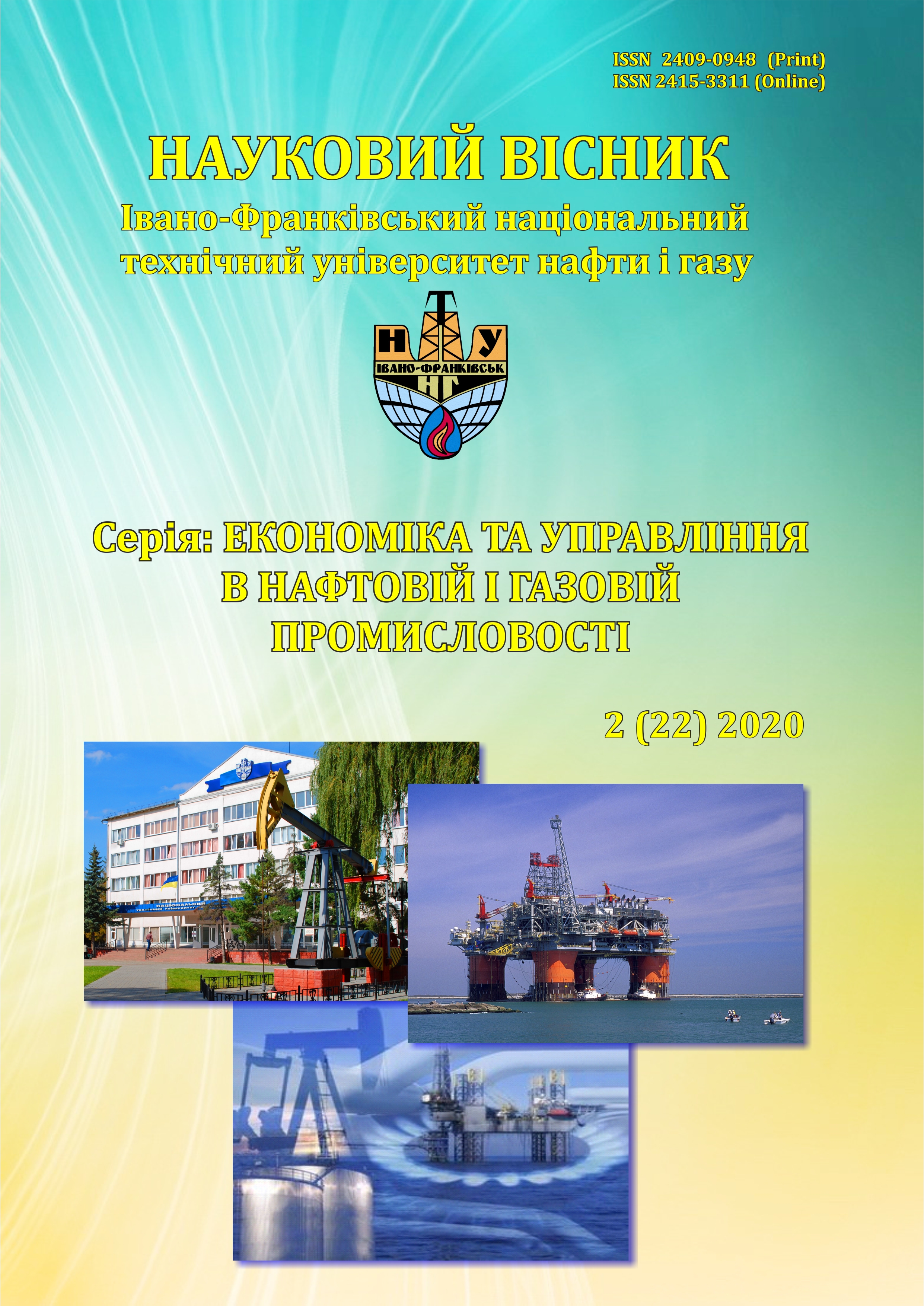STATUS OF SPATIAL ASYMMETRY OF CUSTOMS SPACE IN UKRAINE
DOI:
https://doi.org/10.31471/2409-0948-2020-2(22)-173-180Keywords:
duty space, duty environment, duty climate, international trade, activity of countries, efficiency of duty regulationAbstract
Purpose. Identify and evaluate the spatial asymmetry of Ukraine customs space in the context of identifying opportunities and prospects for balancing it and enhancing its effectiveness.
Methodology of research. Theoretical and methodological basis of the research is the scientific works of domestic and foreign authors on the study of the spatial asymmetry of the customs space of Ukraine, Internet resources. In the course of the research, general and special methods were used, in particular: economic-statistical and calculation-analytical methods for carrying out a complex analysis of the monitoring of the spatial asymmetry of the customs space in Ukraine; abstract-logical and dialectical methods of analysis to substantiate theoretical propositions and conclusions. The techniques of graphical display of results are applied in the article.
Findings. The state of spatial asymmetry of the customs space in Ukraine is analyzed, using indicators(number of enterprises that imported goods, volume of imports of goods, number of enterprises that exported goods), that characterize the customs and foreign trade component, as well as the economic development of the country. The spatial asymmetries of the customs space of Ukraine in the context of determining the prospects and opportunities to increase its efficiency and balance are assessed. An appropriate customs environment has been developed to continue and support the development of trade relations with other countries.
Originality. The state of spatial asymmetry of the customs space of Ukraine in the context of determining the possibilities and prospects of its balancing and improving the efficiency is considered. Practical value. The results of the study reflect the current state of spatial asymmetry of the customs space in Ukraine and are the basis for overcoming the negative aspects and obstacles to its functioning.
References
Verbitska I. I. (2020). Pozytsionuvannya Ukrayiny u hlobalnomu mytnomu prostori. Modernizatsiya ekonomiky Ukrayiny: osnovni tendentsiyi ta problemy : kolektyvna monohrafiya / za red. kand. ekon. nauk, dots. Kulchytskoyi N. YE. Chortkiv: TNEU. S. 102–108.
Ivashchuk I. O. (2009). Otsinka aktyvnosti krayin u mytnomu prostori ta yiyi vplyv na formuvannya mytnoho seredovyshcha. Naukovi zapysky Natsionalnoho universytetu «Ostrozka akademiya». Seriya : Ekonomika. Vyp. 11. S. 40–57.
Sayt Derzhavnoyi sluzhby statystyky Ukrayiny. URL: http://www.ukrstat.gov.ua
Sydor H. V., Kulchytska S. M. (2019). Mytnyy prostir Ukrayiny v umovakh hlobalizatsiyi. Aktualni problemy sotsialno-ekonomichnykh system v umovakh transformatsiynoyi ekonomiky : zb. nauk. statey za mater. V Vseukr. nauk.-prakt. konf., (m. Dnipro, 11–12 kvit. 2019 r.) : u 2-kh ch. Dnipro : NMetAU, CH. 1. S. 106–108. URL: https://nmetau.edu.ua/ua/mdiv/i2015/p2685
Sydor H. V., Kulchytska S. M. (2019). Mytnyy prostir: suchasna interpretatsiya. Ekonomiko-upravlinski aspekty transformatsiyi ta innovatsiynoho rozvytku haluzevykh i rehionalnykh suspilnykh system v suchasnykh umovakh : mater. Vseukr. nauk.-prakt. internet-konf., (m. Ivano-Frankivsk, 11–12 kvit. 2019 r.). Ivano-Frankivsk, S. 264–266.
Sydor H. V. (2020). Teoretychni aspekty stanovlennya mytnoho prostoru. Modernizatsiya ekonomiky: suchasni realiyi, prohnozni stsenariyi ta perspektyvy rozvytku : mater. Mizhnar. nauk.-prakt. konf., (m. Kherson, 28 kvit. 2020 r.). Kherson, S. 563–565.
Sydor H. V., Andrusiv U. YA., Verbitska I. I. (2020). Stratehichni vektory rozvytku mytnoho prostoru Ukrayiny v hlobalnomu seredovyshchi. Naukovyy visnyk IFNTUNH. Seriya : «Ekonomika ta upravlinnya v naftoviy i hazoviy promyslovosti». № 1 (21). S. 27–34.
Sydor H. V. (2020). Otsinyuvannya aktyvnosti krayin u mytnomu prostori. Modernizatsiya ekonomiky Ukrayiny: osnovni tendentsiyi ta problemy : kolektyvna monohrafiya / za red. kand. ekon. nauk, dots. Kulchytskoyi N. YE. Chortkiv : TNEU, S. 202–210.
Stolin V. V. (1983). Samosoznaniye lichnosti. Moskva: Izdatelstvo Moskovskogo universitet.
Shcherbyna T. V.(2014). Teoriyi rehionalnoyi ekonomichnoyi intehratsiyi v konteksti rozvytku mizhnarodnykh vidnosyn. Problemy i perspektyvy rozvytku bankivskoyi systemy Ukrayiny. Vyp. 38. S. 306–314.
Downloads
Published
How to Cite
Issue
Section
License
Copyright and Licensing Terms
Copyright Statement
The authors who publish in the journal accept the following conditions:
- The authors retain the copyright and grant the journal the right of first publication, licensed with Creative CommonsCC BY-NC-SA , which permits other people to remix, transform, and build upon the material and use the material for non-commercial purposes, give appropriate credit and distribute the contributions under the same license as the original.
- The authors can conclude additional agreements on the non-exclusive distribution of the journal’s published version of the work (for example, publication of the work in electronic repositories) with an acknowledgment of its initial publication in this journal.
- The authors can upload the published articles on the Internet (for example, in electronic repositories or on web-sites), as it will stimulate fruitful scholarly discussions and increase the citation rates of the published articles.


1.png)


1.png)





